
全部
▼
搜索
熱搜:
位置:中冶有色 >
> 小型金納米棒的制備
 1301
編輯:中冶有色技術(shù)網(wǎng)
來源:胡青,吳春芳,張凱鋒,潘浩,李坤
1301
編輯:中冶有色技術(shù)網(wǎng)
來源:胡青,吳春芳,張凱鋒,潘浩,李坤

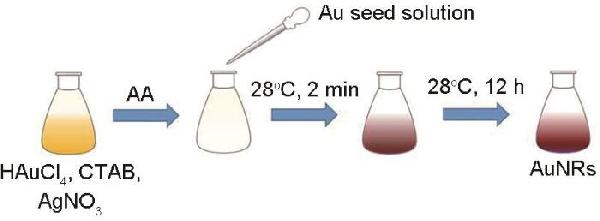
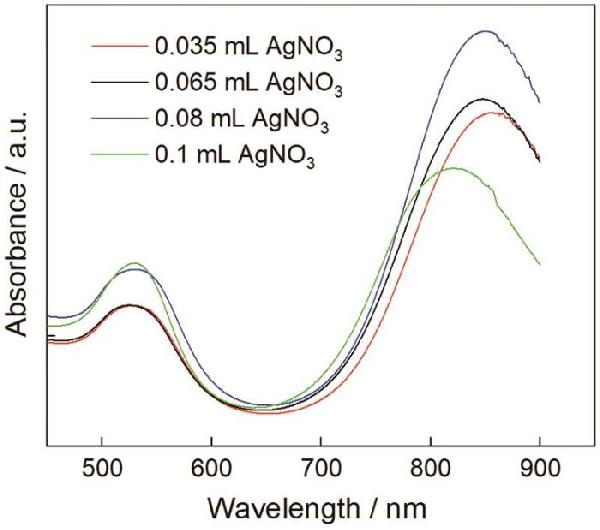
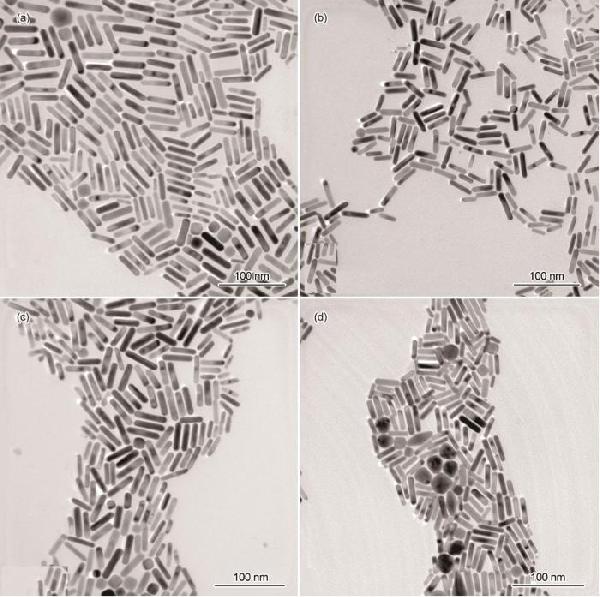
| 0.01 mol/L AgNO3 /mL |
Length /nm |
Diameter /nm |
Aspect ratio (R=L/D) |
Longitudinal SPR /nm |
Yield /% |
|---|---|---|---|---|---|
| 0.035 | 44.5 | 10.5 | 4.2 | 857 | 96 |
| 0.065 | 39.1 | 9.6 | 4.1 | 848 | 98 |
| 0.08 | 38.2 | 9.7 | 3.9 | 832 | 94 |
| 0.1 | 32.9 | 8.9 | 3.7 | 813 | 90 |
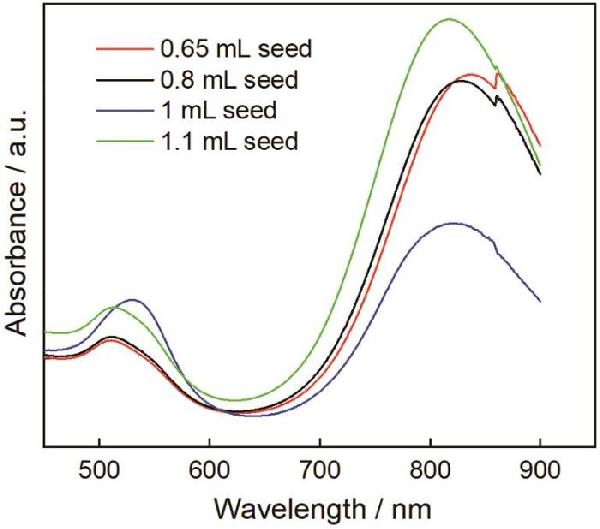
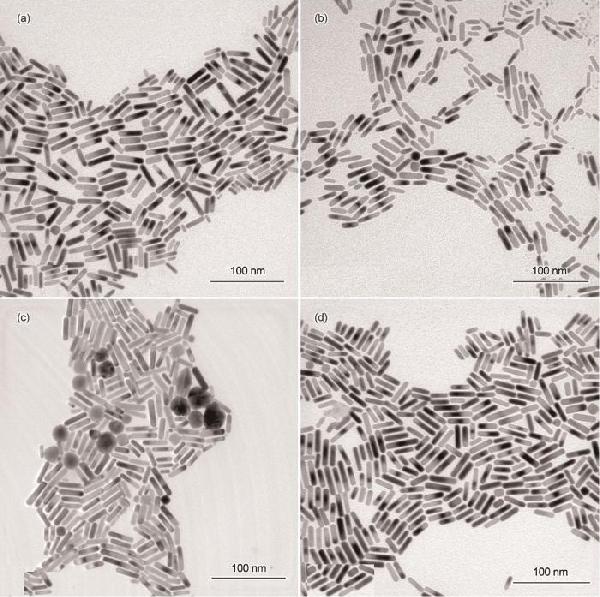
|
Au seed /mL |
Length /nm |
Diameter /nm |
Aspect ratio (R=L/D) |
Longitudinal SPR /nm |
Yield /% |
|---|---|---|---|---|---|
| 0.65 | 39.6 | 9.5 | 4.2 | 855 | 99 |
| 0.8 | 38.5 | 9.8 | 3.9 | 838 | 95 |
| 1 | 32.7 | 8.9 | 3.7 | 814 | 90 |
| 1.1 | 29.9 | 8.3 | 3.6 | 809 | 98 |
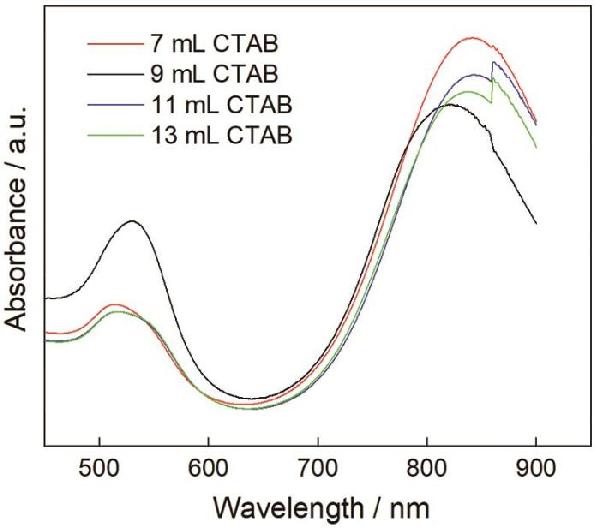
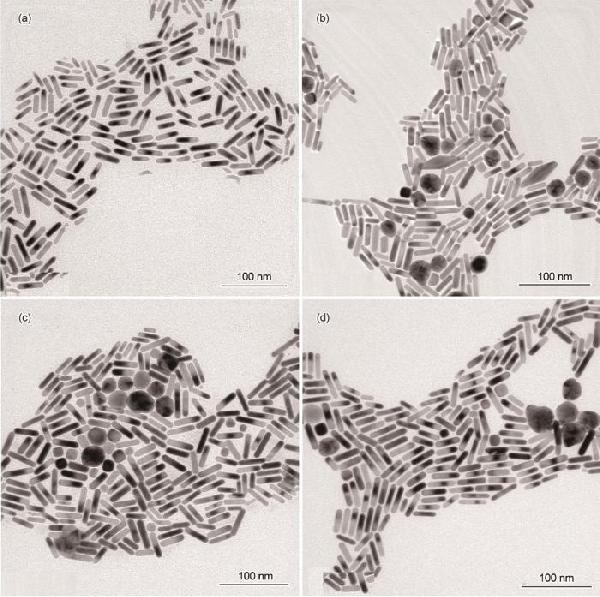
|
0.1 mol/L CTAB /mL |
Length /nm |
Diameter /nm |
Aspect ratio (R=L/D) |
Longitudinal SPR /nm |
Yield /% |
|---|---|---|---|---|---|
| 7 | 33.9 | 9.2 | 3.7 | 815 | 96 |
| 9 | 32.7 | 8.6 | 3.8 | 822 | 87 |
| 11 | 35.5 | 9.1 | 3.9 | 837 | 89 |
| 13 | 36.6 | 9.3 | 3.9 | 843 | 93 |


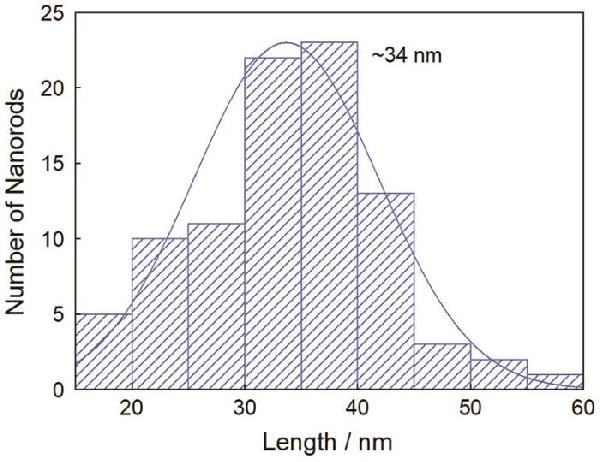
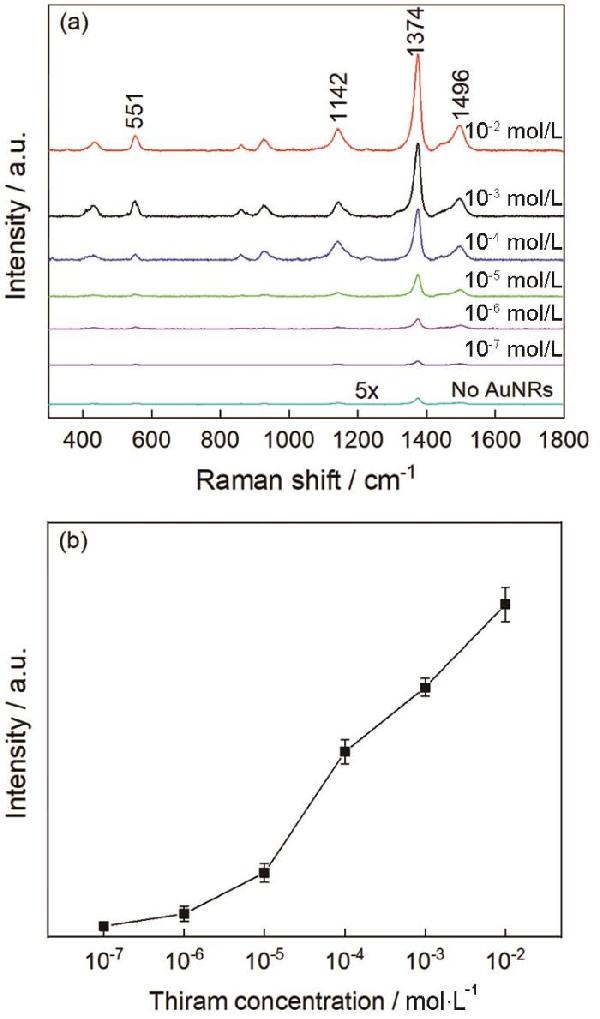
 分享 0
分享 0
 舉報 0
舉報 0
 收藏 0
收藏 0
 反對 0
反對 0
 點贊 0
點贊 0

 中冶有色技術(shù)平臺
中冶有色技術(shù)平臺 2025年03月21日 ~ 23日
2025年03月21日 ~ 23日  2025年03月21日 ~ 23日
2025年03月21日 ~ 23日  2025年03月28日 ~ 30日
2025年03月28日 ~ 30日  2025年03月29日 ~ 31日
2025年03月29日 ~ 31日  2025年04月11日 ~ 13日
2025年04月11日 ~ 13日 
